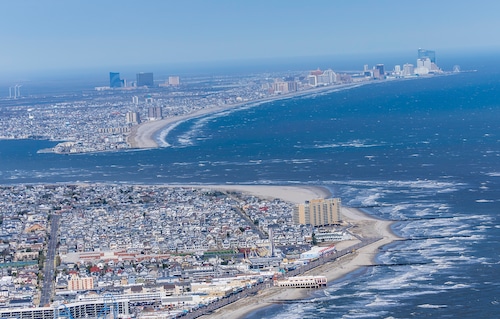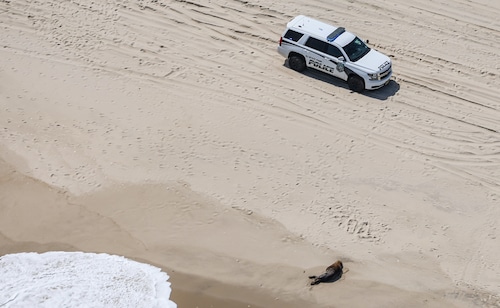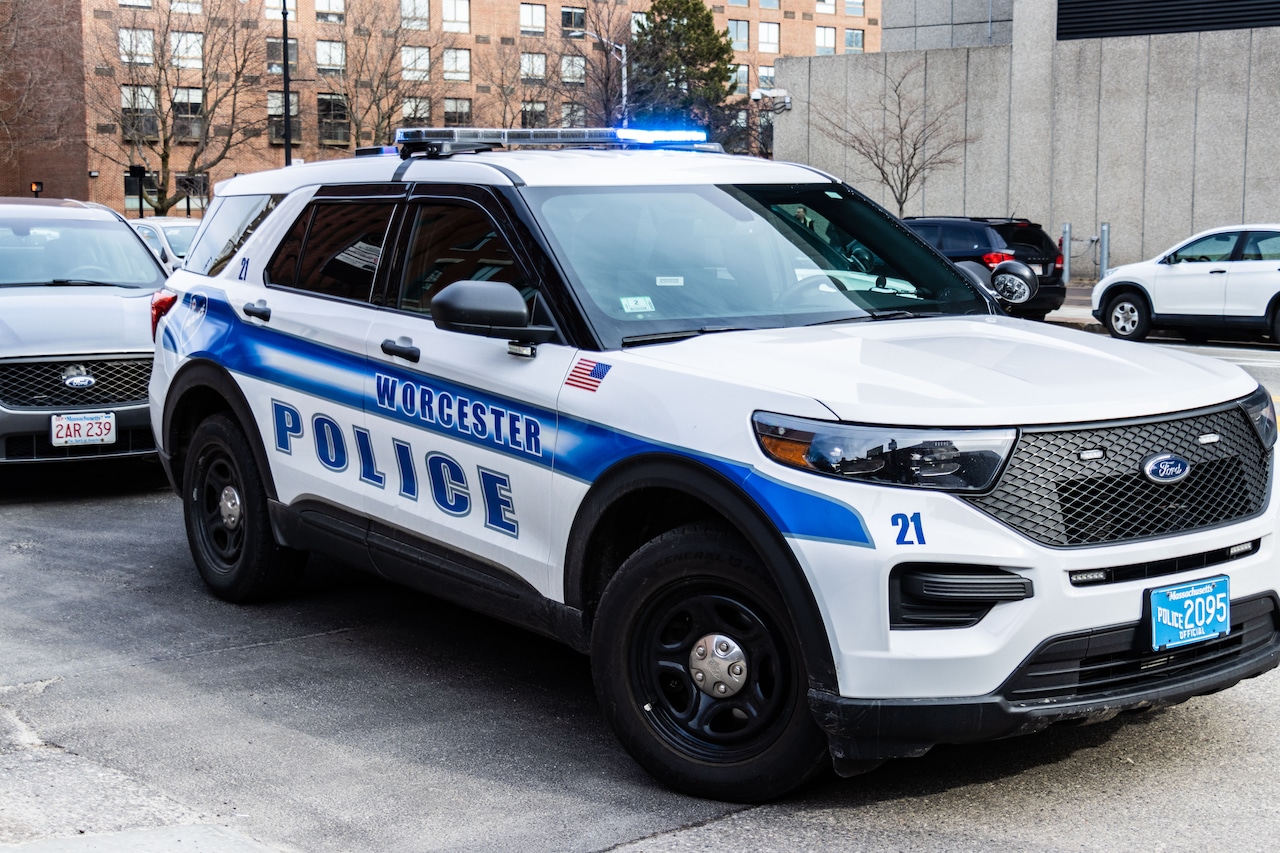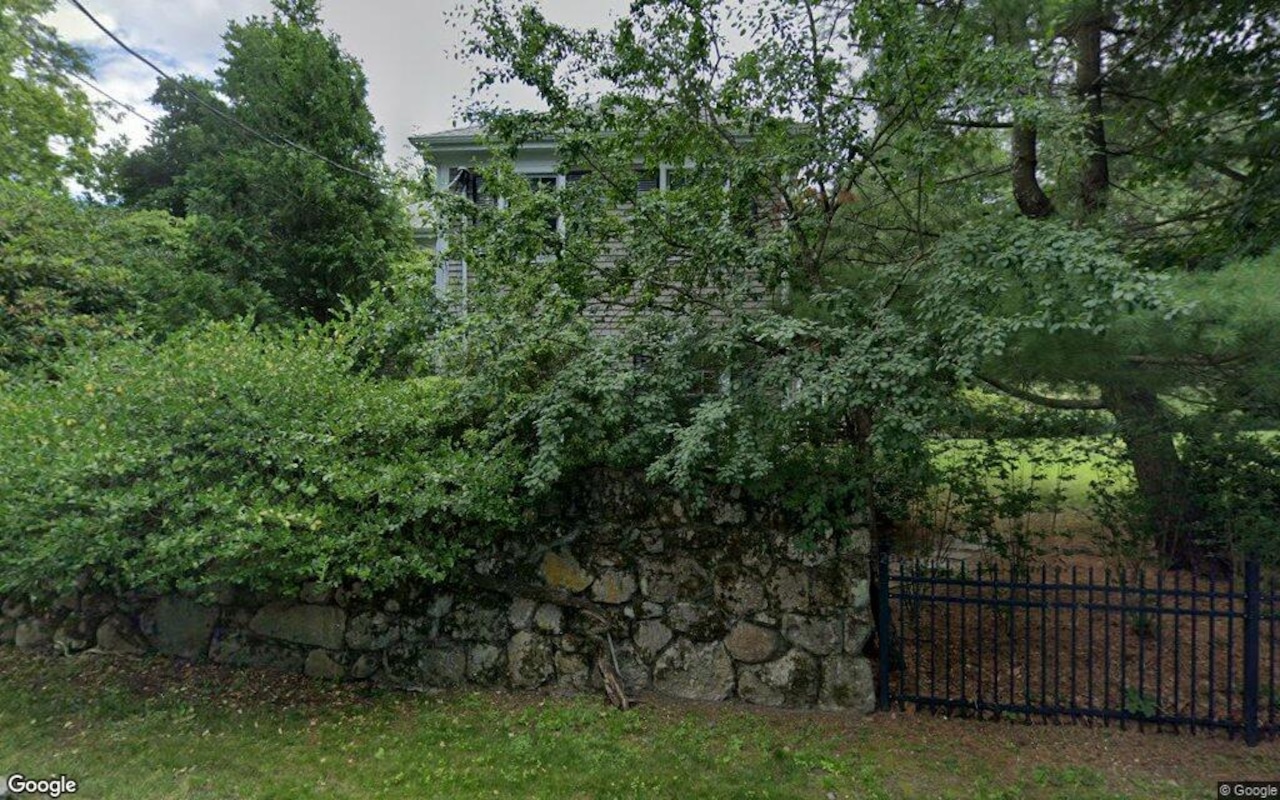Nine horses trotted on the silky smooth sand of Island Beach State Park, their tails swayed in the mid-April sun.
Nearby, a portly seal lounged in the surf, exhausted but undisturbed.
Further south in Sea Isle City, massive machinery, oxidized by use in the salty air and driven by sun-shielded crew members, pumped a slurry of sand onto the shore.
From a thousand feet above the Atlantic Ocean, the rumbling from my seat in a Cessna 172 Skyhawk wasn’t just the propellers quivering to life.
It was a drum roll for the symphony of the Jersey Shore, weeks away from making yet another summer debut.
We took to the skies on a recent sunny Sunday to embark on a rare look at 130 miles of the Garden State’s most precious and precarious beauty.
Of wetlands. Of drylands. Of oddly-named islands and world-famous, yet still barren, boardwalks.
With just weeks to go before the Jersey Shore gets her season in the limelight, several towns are sounding the alarm for sand — pleading for the U.S. Army Corps of Engineers to prioritize their particular piece of the puzzle. On the ground there’s lots to glean: sand cliffs behind orange cones, “Beach Access” closed signs, mayors precariously surveying decaying dunes.
But we wanted to see the coastline from above.
In my own little world, I finally soaked it all in from the clouds.
The spring calm before the summer storm.

Aerial view of a group of horseback riders on the beach at Island Beach State Park, Sunday, April 14, 2024.Andrew Mills | NJ Advance Media for NJ.com
Belmar to the Wildwoods
Each Jersey Shore town told its own story.
The pencil-like splinter of Mantoloking, haphazardly suspended between the meager Metedeconk River and the endless Atlantic Ocean.
The elevated luxury homes of Sea Isle City, where residents are surely comforted by the hundreds of thousands of cubic yards of sand currently being funneled onto the beach.
The likely envious, overlooked property owners in North Wildwood — where the beach has been considerably erased — a stone’s throw from being overtaken by water.
As I sat in the back of the single-engine plane, the pilot at the helm and photojournalist Andrew Mills in front of me, I gripped my map to identify each oddly named landmark we sped past — Muddy Hole Island, Kitts Thorofare, Granny Creek.
There are names we no longer see on a map of the Garden State, like South Cape May, or whose landscape looks a lot different than it once was, like Seabreeze. There, nature has already reclaimed what was hers.
Still, we build back up, in a fight to keep what we think is ours.

Atlantic City beachfront, Sunday looking north 1,000 feet above Ocean City, N.J.Andrew Mills | NJ Advance Media for NJ.com
The $3 billion in taxpayer money and more than 245 million cubic yards of sand used to replenish the Jersey Shore beaches since 1936 have not be enough. All was spent in towns where the sand is only bound to be whisked away again by time and weather — yet, in towns that each feel they need it just as much, if not more, than their neighbors.
In just over five weeks, the Jersey Shore will be taken over by beachgoers ready to build sand castles, run into the freezing ocean and finally get that tan.
Recent estimates show as many as 48 million people visit shore counties in the peak months.
Small towns swell with those numbers and so do economic dollars. State lawmakers say beach tourism generates more than $40 billion each year for New Jersey and supports over 330,000 jobs.
The importance of securing those tourists is perhaps most apparent in the work towns are doing to ready their beaches.
The affluent Avalon and resourceful Toms River may be well-positioned with enough municipal dollars on hand to rebuild their own shores.
But other Jersey Shore towns — Brigantine, Brick and Atlantic City — are currently jockeying for federal and state planners to expedite work to refill their beaches before the spring ends.
Why that was important was clear in Atlantic City, where walkways from the boardwalk to the beach near the Showboat Resort and Ocean Casino ended suddenly. At high tide Sunday, white caps raced ashore — sending waves over railings and onto already-eroded patches.
It’s a never-ending battle, underscored by the wooden skeletons of homes in the midst of construction in towns like Margate, Belmar and Avon-by-the-Sea.
A new decade-long analysis of construction and tax records found budding development has reshaped swaths of the coastal areas. And the state is developing nearly three times faster in flood zones compared to safer areas, according to a Zillow report from 2019.
As erosion increases, a future spelled out by climate change, so will conversations about how realistic it is to keep living so close to the ocean.
However, the people that I saw below were none the wiser.
A group of players huddled on a soccer pitch to hear from their coach a short walk from the beach. Families pushed strollers and looked for a bite to eat along Point Pleasant Beach. A pair parasailing kept their balance on the lapping waves overlooking the Strathmere water tower.
As my flight drew to a close, we headed over the breakwaters of North Wildwood, perhaps the most desperate Jersey Shore town of them all, and a prologue to the entire shore’s future.
Here, there wasn’t a seal, a band of horses, or Army Corps crews milling about ahead of the busy season. Here, the ocean crashed uninterrupted into nearly a dozen blocks of non-existent beach — what was once a bounty of sand.

A New Jersey State Park Police unit stands by with what appears to be a large seal on the beach at Island Beach State Park, Sunday, April 14, 2024.Andrew Mills | NJ Advance Media for NJ.com








